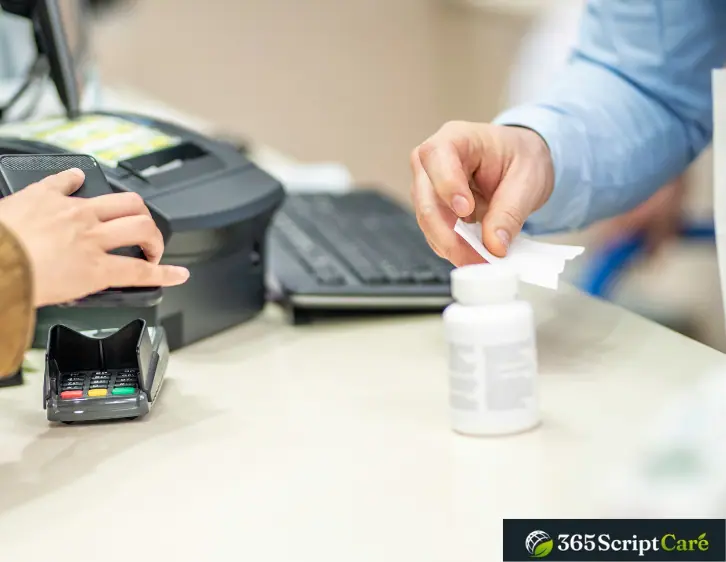 For many diabetics in the US, the high cost of insulin presents a serious financial and health risk. Patients in the United States often consider buying insulin from Canada. Costs there are much lower. This article covers buying insulin from Canada. It explores the legal, financial, and practical parts of doing so. It looks at importation logistics, cost comparisons, and restrictions in the United States and Canada. It also covers possible hazards. These include problems with quality and legal issues. It gives individuals thinking about this choice a full overview.
For many diabetics in the US, the high cost of insulin presents a serious financial and health risk. Patients in the United States often consider buying insulin from Canada. Costs there are much lower. This article covers buying insulin from Canada. It explores the legal, financial, and practical parts of doing so. It looks at importation logistics, cost comparisons, and restrictions in the United States and Canada. It also covers possible hazards. These include problems with quality and legal issues. It gives individuals thinking about this choice a full overview.
What Is Insulin and How Does It Work
Insulin is a vital hormone. The pancreas makes it, the beta cells in the islets of Langerhans. It regulates blood glucose levels by helping cells take up glucose. Cells use glucose for energy or store it as glycogen. Insulin also helps prevent the breakdown of fat and protein. In people without diabetes, insulin release is regulated. It maintains blood glucose in a narrow range.
In people with diabetes, the body doesn’t make enough insulin. This happens in Type 1 diabetes. Or it can’t use the insulin it does make, which happens in Type 2 diabetes. This leads to high blood sugar, or hyperglycemia. So, many diabetics need insulin therapy. It helps them manage their blood sugar. Insulin therapy is given via injections or a pump. It mimics the body’s insulin production pattern. Insulin manages blood glucose. It prevents the acute complications of diabetes, such as ketoacidosis. It also prevents long-term complications like neuropathy, kidney disease, and retinopathy.
U.S. Federal Regulations on Drug Importation
The rules are to make sure drugs are safe and effective. They also protect the interests of consumers and the U.S. drug industry. Federal law generally restricts importing prescription drugs from foreign countries. You can’t bring them into the United States. This is especially true under the regulations enforced by the U.S. Food and Drug Administration (FDA).
FDA Regulations on Personal Importation
The FDA has guidelines. They allow the importation of unapproved drugs for personal use. This is under specific circumstances. These guidelines are not laws but policies that the FDA exercises discretion to enforce. Generally, the FDA permits the importation of a 90-day supply of a drug if:
- The drug is for a serious condition for which effective treatment may not be available domestically.
- There is no commercialization or promotion of the drug to U.S. residents.
- The drug does not represent an unreasonable risk.
- The person importing the drug verifies in writing that it is for their use. They also provide contact info for the treating doctor. Or, they show the drug is for continuing treatment started in a foreign country.
Importation for Commercial Use
Importing drugs for commercial use involves a more stringent regulatory process. Any drug imported commercially into the U.S. must meet the same standards of quality, safety, and efficacy as drugs produced in the U.S. They must be approved by the FDA, properly labeled, and manufactured under approved conditions. Furthermore, importers must be ready to provide evidence of compliance with these standards through documentation and registration with the FDA.
The Drug Supply Chain Security Act
This Act, enacted to enhance the FDA’s ability to protect consumers from exposure to drugs that may be counterfeit, stolen, contaminated, or otherwise harmful, requires that all entities in the pharmaceutical supply chain, including importers, comply with stringent standards regarding documentation, licensing, and other safeguards.
Debates and Legislative Proposals
There have been numerous legislative efforts and policy proposals aimed at relaxing importation laws to allow for the importation of prescription drugs from Canada and other countries where drugs are typically less expensive. Proponents argue that this could significantly lower healthcare costs for Americans. However, these proposals have been met with opposition due to concerns over the potential for counterfeit drugs entering the U.S. market, the impact on domestic pharmaceutical companies, and the overall safety and tracking of imported medications.
Regulations On Selling Insulin To Foreign Citizens
Regulations on selling insulin to foreign citizens vary by country, depending on the national healthcare policies and pharmaceutical laws. For this discussion, we’ll consider the context of Canada, as it’s a common point of interest for U.S. citizens looking to purchase insulin due to its lower price, stemming from government-regulated drug pricing.
Canadian Regulations
In Canada, insulin can be sold to both Canadian residents and foreign citizens, but there are specific regulations that pharmacies must follow to ensure legal compliance:
- Prescription Requirements: Like many other countries, Canada requires a valid prescription for the purchase of insulin. Foreign citizens, including Americans, must typically present a prescription from a healthcare provider licensed in Canada. Some Canadian pharmacies have processes in place to help U.S. citizens obtain a Canadian prescription, often involving a review by a Canadian doctor.
- Pharmacy Licensing: Pharmacies in Canada must be licensed by the provincial regulatory body where they operate. These bodies ensure that pharmacies comply with all local laws. This includes laws about selling prescription drugs to foreigners. Online pharmacies, popular with foreign buyers, must also adhere to stringent standards set by Canadian authorities and are often additionally vetted by independent bodies that monitor cross-border pharmacy operations.
- Canada has no specific export limits on insulin. But, pharmacies might impose limits to prevent shortages. They do this to prioritize Canadian patients. These limitations are more about pharmacy policy and ethical considerations rather than strict legal requirements.
- Canadian pharmacies can legally sell insulin to foreign citizens. But, they must also consider the buyer’s home country’s import rules. In the case of U.S. citizens, Canadian pharmacies should inform buyers about FDA regulations concerning the personal importation of prescription drugs.
How to Legally Purchase Insulin from Canada
Buying insulin from Canada is legal. This is especially for U.S. residents seeking cheaper options. It involves several steps. They ensure that transactions follow both Canadian and U.S. rules. One possible avenue for purchasing insulin is through an online pharmacy partner like 365 Script Care. Below is a step-by-step guide to help navigate the process legally and safely:
Step 1: Research and Verify the Pharmacy or Pharmacy Partner
Before engaging with any pharmacy, verify that it is legitimate and licensed. For Canadian pharmacies, check if they are accredited by the Canadian International Pharmacy Association (CIPA) or a similar regulatory body. Pharmacies like 365 Script Care display their licensing information on their website.
Look for customer reviews and testimonials, which can provide insight into the reliability and service quality of the pharmacy.
Step 2: Understand Prescription Requirements
In Canada, a valid Canadian prescription is required to purchase insulin. Some online pharmacies, such as 365 Script Care, may offer services to connect U.S. patients with Canadian doctors. The doctors can review their health profiles and issue a Canadian prescription after a consultation. The consultation may sometimes be online.
Start with a valid U.S. prescription. This can help in getting a Canadian one. It also ensures the insulin matches the type and dose.
Step 3: Place Your Order
With a valid prescription, you can place an order through the pharmacy’s website or over the phone. Make sure to provide all needed documents. These include your prescription and medical history.
Use the pharmacy’s consultation services. Use them for any questions or concerns about the insulin. This includes its storage and shipment.
Step 4: Understand Import Regulations
According to the FDA, U.S. residents can legally import up to a 90-day supply of medication for personal use under certain conditions. These include the drug being for a serious condition. Effective treatment may not be available domestically and the product does not pose an unreasonable risk.
Be ready to declare the insulin at U.S. Customs. You must provide all needed documents, including the prescription, proof of talking to a Canadian doctor, and any letters from the pharmacy.
Step 5: Consider Shipping and Handling
Insulin must be stored at the correct temperatures to maintain its efficacy. Ensure that the pharmacy uses appropriate shipping methods to keep the insulin cool.
Use tracking services to monitor the delivery status of your insulin, to ensure that you can receive and store it properly immediately upon arrival.
Step 6: Follow-Up and Monitoring
Once you start using insulin purchased from Canada, continue regular check-ups with your healthcare provider to monitor its effectiveness and adjust dosages if necessary.
Anticipate the need to reorder your supply before it runs out, keeping in mind the time it takes for processing and shipping.

Customs Procedures and How to Comply with US Import Regulations
When importing prescription medications from Canada into the United States, such as insulin, it’s important to follow import laws and navigate U.S. Customs processes. These regulations have precise standards that must be understood. FDA (Food and Drug Administration) and the U.S. Border and Customs Protection (CBP). Here’s a thorough look at how to oversee this procedure:
Understanding FDA Guidelines
The FDA has strict rules regarding the importation of prescription drugs by individuals for personal use. While generally discouraged, the FDA allows the importation of a limited quantity of a drug under certain circumstances:
- Medical Necessity: The drug is for a condition for which effective treatment is not available in the United States.
- No Unreasonable Risk: The drug is deemed to pose no unreasonable risk.
- Personal Use: The drug is clearly for personal use, and the quantity imported generally does not exceed a 90-day supply.
- Proper Labeling: The drug must be properly labeled to ensure that it is not misused or administered incorrectly.
Complying with Customs Procedures
When you arrive at a U.S. entry point (airport or border crossing), you must declare any drugs or medication you are bringing into the country, including insulin. Here are the steps to ensure compliance:
- Inform the CBP officer that you are carrying insulin or other prescription drugs. This is usually done verbally, and by presenting a declaration form upon your arrival.
- Have your prescription ready to show to the CBP officer. This should be a U.S. prescription or a prescription from a licensed practitioner that is acceptable under the personal importation policy of the FDA. Documentation should include:
- The name of the drug.
- The dosage.
- The quantity being imported.
- A letter from your doctor explaining the need for the drug and stating that it is for your personal use.
- Be prepared for the possibility that your medication will be inspected. CBP officers have the right to inspect incoming substances to verify their identity and ensure that they comply with U.S. laws.
Practical Tips
- Always keep medications in their original packaging so they are easily identifiable. This packaging should include labeling with your name (as the patient), the prescribing doctor’s details, and the pharmacy’s details if applicable.
- While this is not always required, having a copy of your medical records can help clarify the necessity of the medication if questioned by CBP officers.
- Understand that certain substances are tightly controlled, and while insulin is typically allowed under the 90-day rule, other medications might have stricter regulations.
- If you have concerns or need clarification on what is permitted, it’s a good idea to contact the FDA’s Division of Import Operations and Policy, and the CBP office at your point of entry before travelling.
Following these rules and having the right documents and declarations can help you at customs. They also ensure compliance with U.S. import rules. This is when bringing insulin or other drugs into the U.S. from Canada.
Ensuring insulin’s quality and proper storage during transport is critical. This is true for after it reaches its destination, too. It is key for maintaining its efficacy and safety. Here are the considerations and measures that should be taken:
Ensuring Insulin’s Quality During Transportation
- To keep insulin effective, you must store it at a controlled temperature. Most types of insulin need to be stored between 2°C and 8°C (36°F and 46°F) until opened. Insulated packaging is important during transportation. This is especially true for long trips or insulin from Canada. The packaging should have gel packs to keep it cool.
- Insulin mustn’t freeze. Freezing changes the structure of insulin, rendering it ineffective. Design insulated packages to keep insulin cool. But, they should not be cold enough to freeze.
- Consider using shipping options that shorten transit time. They reduce the exposure of insulin to uncontrolled environments. Fast shipping methods can help. They reduce the time insulin spends in harm. This helps keep its integrity.
- Some shipping services offer solutions for sensitive pharmaceuticals. They include temperature monitoring and control for products like insulin. These services might include temperature logs or indicators. They confirm that the insulin stayed at safe temperatures during the journey.
Risks Associated with Improper Storage
- If insulin is stored outside the recommended temperature range, it can lose its potency. This means it won’t effectively lower blood glucose. This can lead to poorly controlled diabetes. It raises the risk of both short-term and long-term complications. These come from high blood sugar.
- Improperly stored insulin may change physically. It may clump, frost, or change color. Such changes are indicators that the insulin might not be safe to use. Using insulin that shows any of these changes can result in inadequate dosing and health risks.
- Using bad insulin can lead to poor glycemic control. This increases the risk of complications like diabetic ketoacidosis. This is a serious condition that occurs when your body produces high levels of blood acids called ketones. It can also lead to high blood sugar or even low blood sugar if the insulin sporadically becomes more potent.
- Insulin is costly. Having to replace it adds burden on patients. It has degraded due to improper storage.
Best Practices for Storage
- Once insulin reaches its destination, it should be stored in a refrigerator at 2°C to 8°C (36°F to 46°F). The patient’s current insulin can be kept at room temperature (not above 30°C or 86°F) to avoid injection discomfort. But it must be used within the time recommended by the manufacturer.
- For individuals traveling with insulin, using a small, portable, insulated cooler with gel packs is advisable. It’s important not to place insulin next to ice or gel packs. But, you can do this if there is a protective layer to prevent freezing.
- Regularly check the appearance of insulin. If insulin looks cloudy, has solid particles or clumps after it’s supposed to be uniformly mixed, or if it has changed color, do not use it.
Proper storage and handling are crucial. They maintain the quality of insulin. This is vital for the health and safety of people who rely on it. Being vigilant about these practices ensures that insulin stays potent and effective. This must happen from the point of buy to when you give it.
Where to Buy Insulin Medication?
When considering buying insulin, especially for those looking for options outside of regular pharmacies, online pharmacies can be a handy and often cheaper choice. One such reliable online pharmacy is 365 Script Care. Here’s how you can buy insulin from 365 Script Care. Also, what to consider when buying medication online:
Buying Insulin from 365 Script Care
- Visit the Website: Start by visiting the 365 Script Care website. You must ensure you are on the real site. This is key to avoid fraud.
- Search for Insulin: Use the website’s search function to find the type of insulin you need. 365 Script Care usually lists many insulin products. This makes it easier to find the type your provider recommended.
- Create an Account: Before making a purchase, you’ll likely need to create an account with 365 Script Care. This involves providing some personal information and setting up login credentials.
- Place Your Order: Once you have the prescription, you can place your order. Be sure to select the right type and amount of insulin. Do so as prescribed.
- Payment and Confirmation: Complete your buy by making a payment. It’s advisable to use secure payment methods offered by the website. After the buy, you should get an order confirmation by email. It usually includes details about tracking your shipment.
Considerations When Buying Insulin Online
When purchasing insulin online, it is crucial to ensure the legitimacy and safety of the pharmacy. Look for accreditation from groups like the Canadian International Pharmacy Association (CIPA). It shows that Canadian pharmacies have it. CIPA certifies that the pharmacy meets certain safety standards. Also, always consult your healthcare provider before buying insulin. They can confirm that the type and dosage are right for your treatment. Understanding the legal implications is also essential. In the U.S., the FDA has strict guidelines for importing meds. You must follow them to avoid legal issues.
Ensuring proper storage and handling during shipping is another critical consideration. Insulin must be kept at controlled temperatures to maintain its efficacy. Choose a pharmacy partner like 365 Script Care. They use proper shipping to keep the right temperature during shipping. Good customer service is also vital. Accessible support can help fix issues with your order and answer medication questions. By taking these steps, buying insulin from an online pharmacy can be a practical and cheap option. It will greatly reduce the burden of getting vital medications. This is especially true for those contending with high costs at home.
Final Thought
Many Americans seek relief from the high costs of insulin. They do this by buying it from Canada and bringing it into the USA. It requires careful navigation. You must navigate both U.S. and Canadian laws to ensure compliance. The FDA allows the importation of a 90-day supply for personal use. But it must meet specific conditions. They stress the need to ensure the drug is for personal use and not too risky. It must come with the right prescriptions and documentation. By following these rules, people can get insulin for less. Still, buyers must consider the legal and logistical challenges. They arise from importing drugs from other countries. They must ensure the quality and storage conditions during transport. This route offers big cost savings. But it also highlights the broader issue of drug prices and access. This issue calls for systemic fixes in the US.






